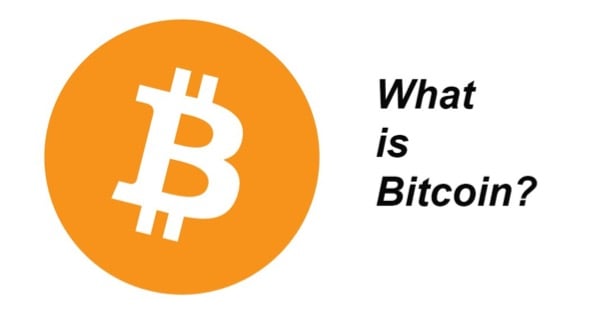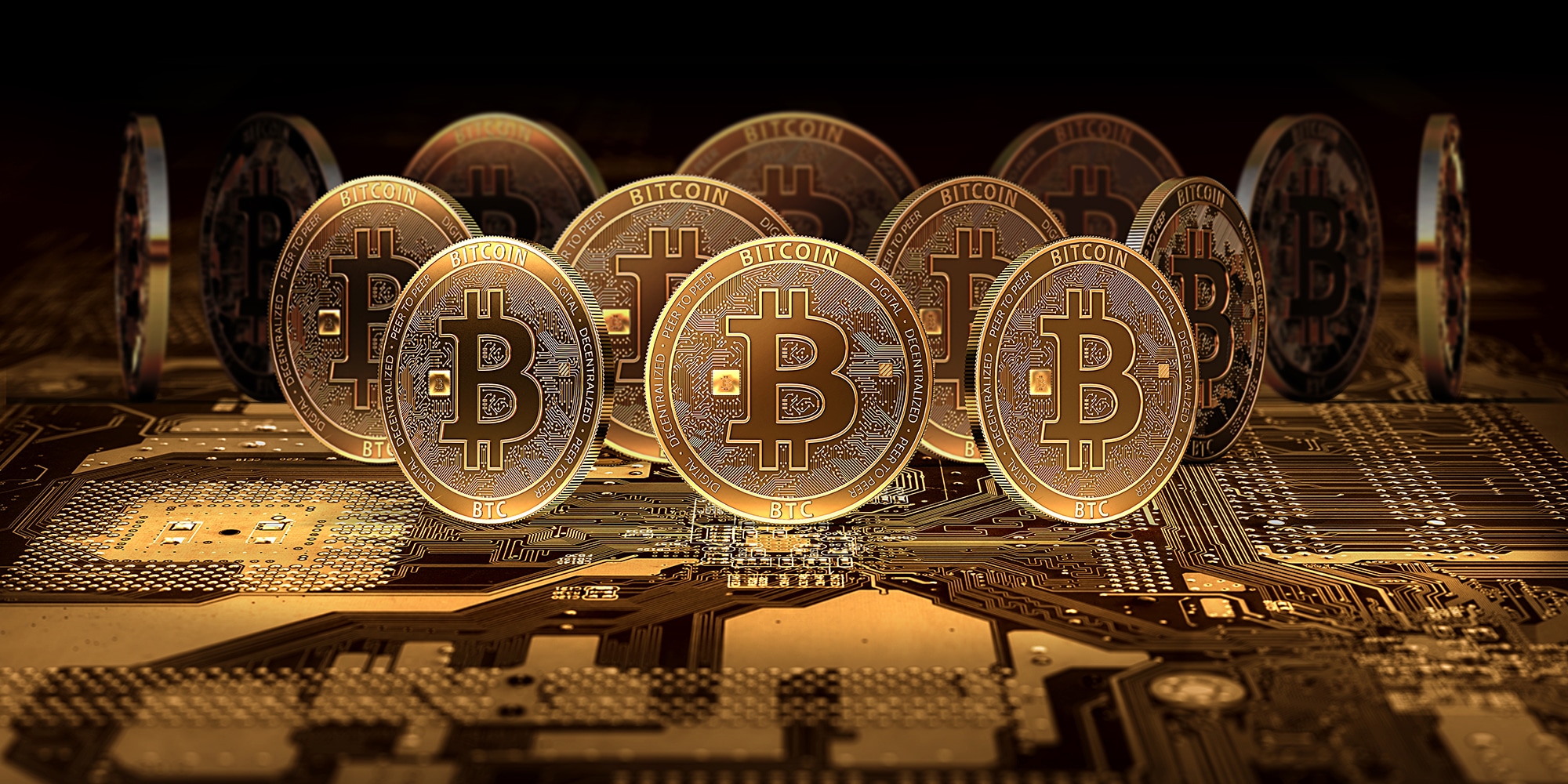
What is Bitcoin?
Bitcoin is a digital currency created in January 2009. It follows the
ideas set out in a whitepaper by the mysterious and pseudonymous
developer Satoshi Nakamoto, whose true identity has yet to be verified.
Bitcoin offers the promise of lower transaction fees than traditional
online payment mechanisms and is operated by a decentralized authority,
unlike government-issued currencies.
What Is Bitcoin
KEY TAKEAWAYS
Launched in 2009, Bitcoin is the world's largest cryptocurrency by
market cap.
Unlike fiat currency, Bitcoin is created, distributed, traded and stored
with the use of a decentralized ledger system known as blockchain.
Bitcoin's history as a store of value has been turbulent; the
cryptocurrency skyrocketed up to roughly $20,000 per coin in 2017, but
as of two years later, is currency trading for less than half of that.
As the earliest cryptocurrency to meet widespread popularity and
success, Bitcoin has inspired a host of offshoots and imitators.

Understanding Bitcoin
Bitcoin is a type of cryptocurrency. Balances of Bitcoin tokens are kept
using public and private "keys," which are long strings of numbers and
letters linked through the mathematical encryption algorithm that was
used to create them. The public key (comparable to a bank account
number) serves as the address which is published to the world and to
which others may send bitcoins. The private key (comparable to an ATM
PIN) is meant to be a guarded secret and only used to authorize Bitcoin
transmissions. Bitcoin keys should not be confused with a Bitcoin
wallet, which is a physical or digital device which facilitates the
trading of Bitcoin and allows users to track ownership of coins. The
term "wallet" is a bit misleading, as Bitcoin's decentralized nature
means that it is never stored "in" a wallet, but rather decentrally on a
blockchain.
Style notes: according to the official Bitcoin Foundation, the word
"Bitcoin" is capitalized in the context of referring to the entity or
concept, whereas "bitcoin" is written in the lower case when referring
to a quantity of the currency (e.g. "I traded 20 bitcoin") or the units
themselves. The plural form can be either "bitcoin" or "bitcoins."
Bitcoin is also commonly abbreviated as "BTC."

How Bitcoin Works
Bitcoin is one of the first digital currencies to use peer-to-peer
technology to facilitate instant payments. The independent individuals
and companies who own the governing computing power and participate in
the Bitcoin network, also known as "miners," are motivated by rewards
(the release of new bitcoin) and transaction fees paid in bitcoin. These
miners can be thought of as the decentralized authority enforcing the
credibility of the Bitcoin network. New bitcoin is being released to the
miners at a fixed, but periodically declining rate, such that the total
supply of bitcoins approaches 21 million. Currently, there are roughly 3
million bitcoins which have yet to be mined. In this way, Bitcoin (and
any cryptocurrency generated through a similar process) operates
differently from fiat currency; in centralized banking systems, currency
is released at a rate matching the growth in goods in an attempt to
maintain price stability, while a decentralized system like Bitcoin sets
the release rate ahead of time and according to an algorithm.
Bitcoin mining is the process by which bitcoins are released into
circulation. Generally, mining requires the solving of computationally
difficult puzzles in order to discover a new block, which is added to
the blockchain. In contributing to the blockchain, mining adds and
verifies transaction records across the network. For adding blocks to
the blockchain, miners receive a reward in the form of a few bitcoins;
the reward is halved every 210,000 blocks. The block reward was 50 new
bitcoins in 2009 and is currently 12.5. As more and more bitcoins are
created, the difficulty of the mining process – that is, the amount of
computing power involved – increases. The mining difficulty began at 1.0
with Bitcoin's debut back in 2009; at the end of the year, it was only
1.18. As of October 2019, the mining difficulty is over 12 trillion.
Once, an ordinary desktop computer sufficed for the mining process; now,
to combat the difficulty level, miners must use expensive, complex
hardware like Application-Specific Integrated Circuits (ASIC) and more
advanced processing units like Graphic Processing Units (GPUs). These
elaborate mining processors are known as "mining rigs."
One bitcoin is divisible to eight decimal places (100 millionths of one
bitcoin), and this smallest unit is referred to as a Satoshi. If
necessary, and if the participating miners accept the change, Bitcoin
could eventually be made divisible to even more decimal places.

What's a Bitcoin Worth?
In 2017 alone, the price of Bitcoin rose from a little under $1,000 at
the beginning of the year to close to $19,000, ending the year more than
1,400% higher. More recently, the cryptocurrency has declined in value
and more-or-less plateaued, save for a few periods of relatively lower
price figures (the early portion of 2019, when prices hovered around
$3500) and relatively higher ones (June and July of 2019, when prices
briefly peaked at over $13,000). As of October 2019, Bitcoin seems to
have found a new price point in the range of $8,000 to $9,000.
Bitcoin's price is quite dependent on the size of its mining network,
since the larger the network is, the more difficult – and thus more
costly – it is to produce new bitcoins. As a result, the price of
bitcoin has to increase as its cost of production also rises. The
Bitcoin mining network's aggregate processing power is known as the
"hash rate," referring to the number of times per second the network can
attempt to complete a hashing puzzle necessary before a block can be
added to the blockchain. As of October 23, 2019, the network reached a
record high 114 quintillion hashes per second.
How Bitcoin Began
Aug. 18, 2008: The domain name bitcoin.org is registered. Today, at
least, this domain is "WhoisGuard Protected," meaning the identity of
the person who registered it is not public information.
Oct. 31, 2008: Someone using the name Satoshi Nakamoto makes an
announcement on The Cryptography Mailing list at metzdowd.com: "I've
been working on a new electronic cash system that's fully peer-to-peer,
with no trusted third party. The paper is available at
http://www.bitcoin.org/bitcoin.pdf." This link leads to the now-famous
whitepaper published on bitcoin.org entitled "Bitcoin: A Peer-to-Peer
Electronic Cash System." This paper would become the Magna Carta for how
Bitcoin operates today.
Jan. 3, 2009: The first Bitcoin block is mined, Block 0. This is also
known as the "genesis block" and contains the text: "The Times
03/Jan/2009 Chancellor on brink of second bailout for banks," perhaps as
proof that the block was mined on or after that date, and perhaps also
as relevant political commentary.
Jan. 8, 2009: The first version of the Bitcoin software is announced on
The Cryptography Mailing list.
Jan. 9, 2009: Block 1 is mined, and Bitcoin mining commences in earnest.
Receiving Bitcoins As Payment
Bitcoins can be accepted as a means of payment for products sold or
services provided. If you have a brick and mortar store, just display a
sign saying “Bitcoin Accepted Here” and many of your customers may well
take you up on it; the transactions can be handled with the requisite
hardware terminal or wallet address through QR codes and touch screen
apps. An online business can easily accept bitcoins by just adding this
payment option to the others it offers, like credit cards, PayPal, etc.
Online payments will require a Bitcoin merchant tool (an external
processor like Coinbase or BitPay).











